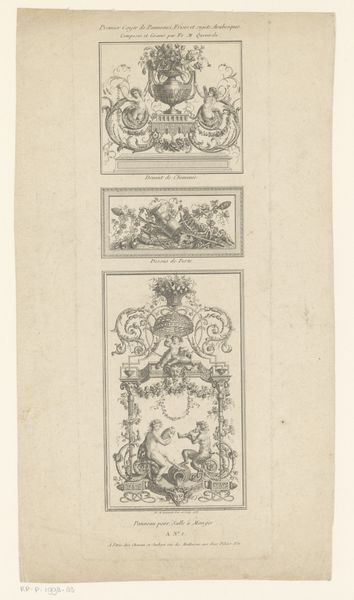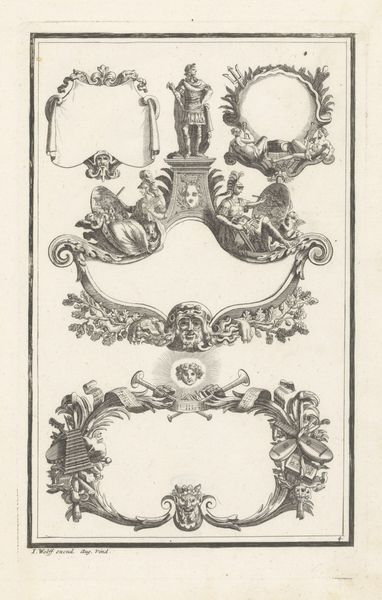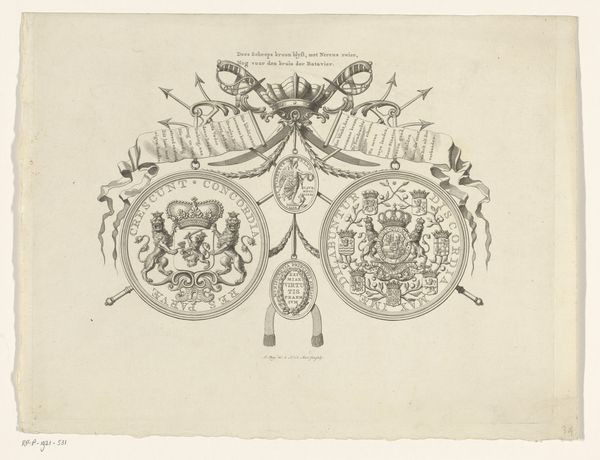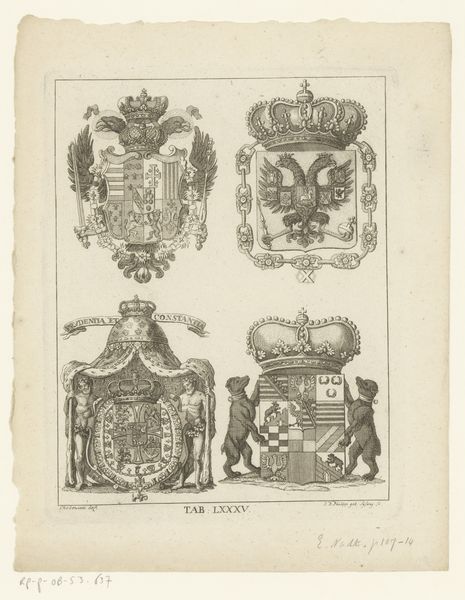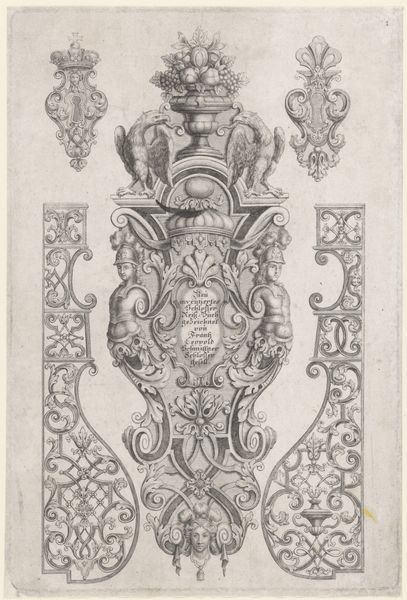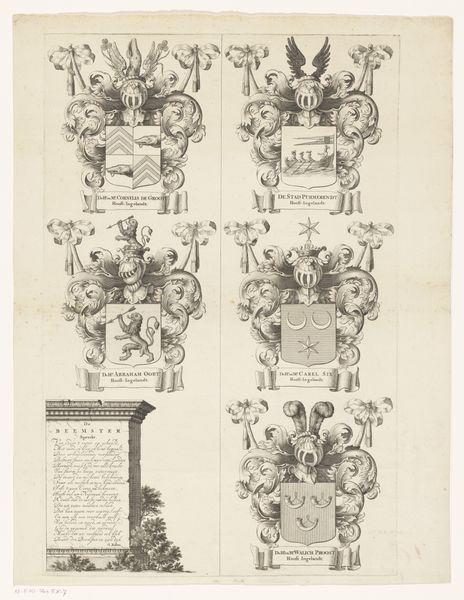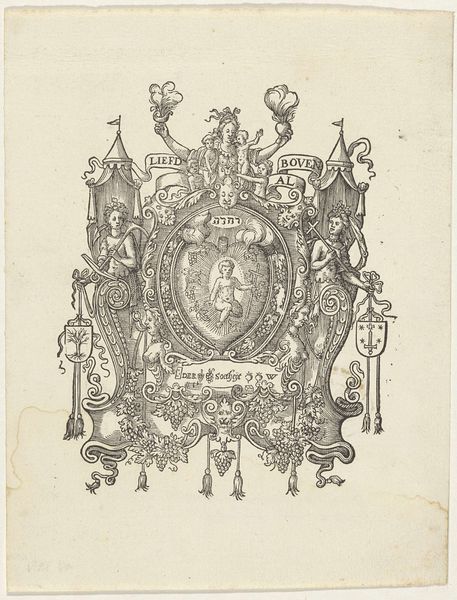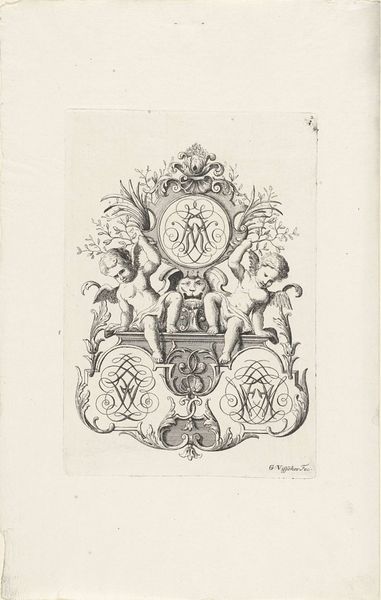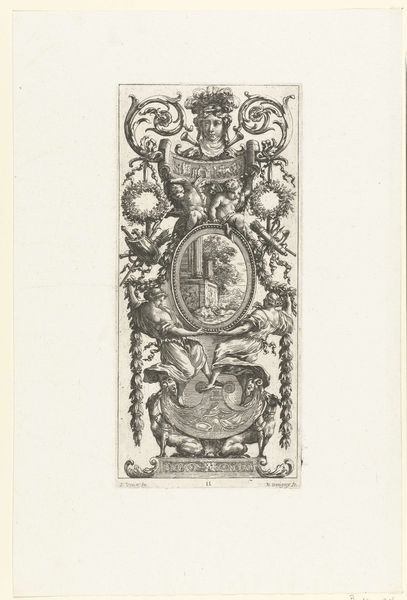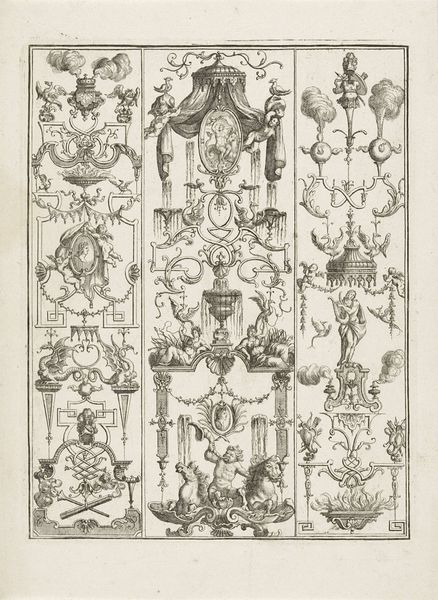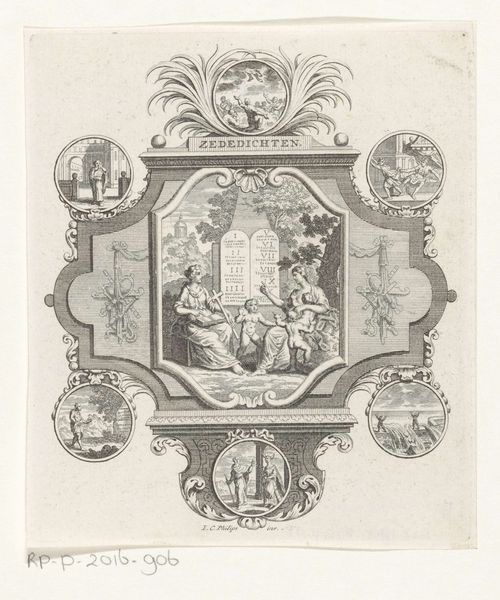
drawing, graphic-art, print, engraving
#
drawing
#
graphic-art
#
baroque
#
pen drawing
# print
#
engraving
Dimensions: height 515 mm, width 344 mm
Copyright: Rijks Museum: Open Domain
Editor: Here we have a section of the “Wapenrand van een kaart van de Alblasserwaard en de Vijfheerenlanden (deel)”, a print from 1716. It showcases four family crests with elaborate ornamentation, rendered through engraving. It gives me a very formal, almost austere feeling, yet the decorative elements introduce an element of lavishness. What’s your interpretation of these heraldic images, particularly in their historical context? Curator: This work acts as a potent reminder of the deep interweaving of power, identity, and representation in 18th-century Dutch society. These aren't simply decorative images; they are carefully constructed visual statements of belonging and influence, each crest representing a family embedded within the complex socio-political landscape of the Alblasserwaard and Vijfheerenlanden. Consider, for instance, how the Baroque style itself – with its emphasis on grandeur and dramatic flair – served to reinforce the status of these families. In what ways do you see class and representation interacting within this particular historical frame? Editor: So, the artwork's visual language served to highlight and legitimize the existing class structures. Curator: Exactly! The families used these crests to perform power, claiming space, lineage, and legacy within the map's broader narrative. We could even look at the material of the print, its accessibility. Who would have likely viewed these images, and what kind of message was the print intended to convey? It makes one consider how "neutral" representations like maps are, and if that's even possible, as well as the agency and cultural biases the creator brings forth to begin with. Editor: Thinking about it now, this makes me realize the seemingly objective act of cartography is laden with these embedded narratives of privilege and representation. The families almost seem to have agency and social authority within the territory itself. Curator: Precisely. It encourages us to interrogate the hidden politics inherent in supposedly neutral depictions of land and belonging, urging us to rethink mapping and identity in today’s socio-political climate. Editor: Thank you! I didn't realize how charged the visual and material aspects were.
Comments
No comments
Be the first to comment and join the conversation on the ultimate creative platform.
